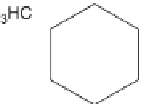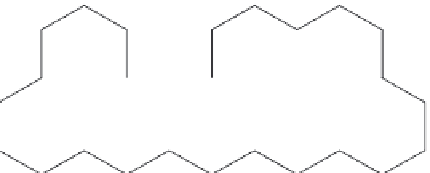Agriculture Reference
In-Depth Information
baked goods as an alternative to the addition of calcium propionate, which is
perceived as label unfriendly.
6.2.4 Natamycin
The polyene macrolide antifungal compound, natamycin (formerly pimaricin)
(Fig. 6.2) can also be considered natural because it is produced by fermentation of
the bacterium
Streptomyces natalensis
and closely related species. The name,
natamycin, is derived from the discovery of this strain in 1955 in a soil sample
from Natal Province in South Africa (Struyk
et al.
1958). Natamycin is now
produced as a commercial food preservative. Natamycin is used as an approved
food preservative worldwide, mainly for surface treatment of cheese and dried
sausages (the only authorisations in the EU) (Stark 1999; Thomas and Delves-
Broughton 2001; Delves-Broughton
et al.
2005). In the US, natamycin has GRAS
status and is allowed in cheese rather than on the surface. Its use in the US has
been extended to non-standard identity yogurt, cottage cheese, sour cream, cream
cheese, salad dressing and soft tortillas (FDA 2003a,b) and the surface of bread
(Delves-Broughton
et al.
2010). Use is much broader in South Africa where it was
fi rst discovered. In 2002, JECFA re-evaluated natamycin with a specifi c request to
assess the issue of antibiotic resistance (WHO 2002). This monograph reviewed
all aspects of the toxicity and safety of natamycin and its degradation products,
and reached very positive conclusions. Natamycin preparations are made by the
fermentation of sugar-based media.
Natamycin is active against nearly all yeasts and moulds but has no effect on
bacteria, protozoa or viruses. Its lack of activity against bacteria is of particular
benefi t in bacterial fermented or ripened food. The antifungal is active at very low
concentrations: most moulds are inhibited at 0.5-6.0 μg/ml, although some
Fig. 6.2
Structure of natamycin.



































Search WWH ::

Custom Search